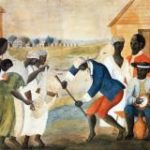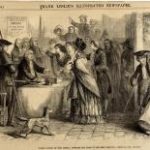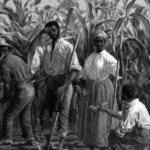In this lesson, students will come to understand why having common weights and measures, imposed and enforced by the government, is important in day-to-day life. They will discuss how weights and measures permeate the sciences, industry, and commerce, discovering the importance of such standards in their own lives. In the process, students will identify concepts underlying the need for weights and measures, such as private property and fair treatment under the law.
Residential Property Signs
This lesson uses City of Ladue v. Gilleo as the basis for discussion of First Amendment rights. Students will argue for both sides of the case, and a group of students will serve as the city council; they will questions both sides and ultimately decide whether the ordinance should be upheld or not. The resource person might then lead a discussion on local laws regarding signs, posters, and handbills.
Maryland-National Capital Park and Planning Commission v. American Humanist Association (2019)
Does a local government’s display and maintenance of a 40-foot tall Latin cross on public property, established in memory of fallen World War I soldiers, violate the First Amendment’s Establishment Clause? This case summary shows how the Supreme Court answered this question in 2019.
Dolley Madison and Slavery

This short video presents Dolley Madison as a typical member of the antebellum slaveholding gentry. Dolley, like her southern contemporaries, saw slaves as property. Professor Catherine Allgor notes that when Dolley Madison began selling her slaves in the 1840’s, she was strongly criticized by the abolitionist press.
Women Vote in New Jersey (1776-1807)

This short video focuses on late 18th century New Jersey—the only state which (temporarily) enfranchised (some) women. The 1776 New Jersey constitution granted voting rights to all property-owning inhabitants while the constitutions of 1790 and 1796 referred to voters as “he and she.” Professor Rosemarie Zagarri concludes that the political ideology of the American Revolution did have lasting implications for women, even though New Jersey rescinded their voting rights in 1807.
Women Before the American Revolution
This short video explores the limited rights of women prior to the American Revolution. According to the idea of femme covert, women were legally and politically subservient to their husbands. Married women could not own property and all women were considered irrelevant to the political sphere. Professor Rosemarie Zagarri notes that 80% of the freemen in the colonies could vote (as compared to 20% in Great Britain), but suffrage was still limited to men.
Castle Rock v. Gonzales (2005)
Does a court-issued restraining order create a property interest which is protected by the Due Process Clause? This case summary shows how the Supreme Court answered that question in 2005.
Kelo v. New London (2005)
Does the term “public use” permit a local government to take the private property of one party and lease it to another? This case summary shows how the Supreme Court answered that question in 2005.
The Reconstruction Amendments: Official Documents as Social History
The Fourteenth Amendment was the most important constitutional change in the nation’s history since the Bill of Rights. Its heart was the first section, which declared all persons born or naturalized in the United States (except Indians) to be both national and state citizens, and which prohibited the states from abridging their “privileges and immunities,” depriving any person of life, liberty, or property without due process of law, or denying them “equal protection of the laws.” Free registration for students and teachers required to access resource.
Slavery and the Three-Fifths Compromise

This short video explains the role played by slavery in counting population for taxation and representation. Drawing upon an unsuccessful 1783 amendment to the Articles, James Madison suggested that the slave population be counted at 60% for both representation and taxation. Professor John Kaminski explains how this “federal ratio” reconciled Southerners (who wanted slaves counted as people for representation) and Northerners (who wanted slaves counted as property in determining taxation.)